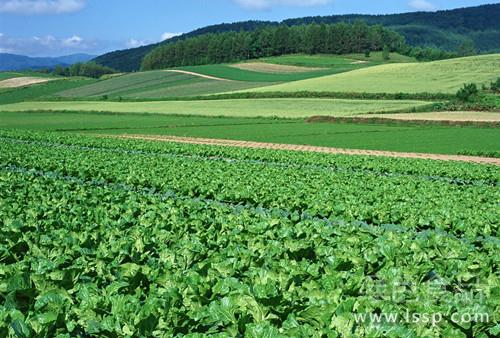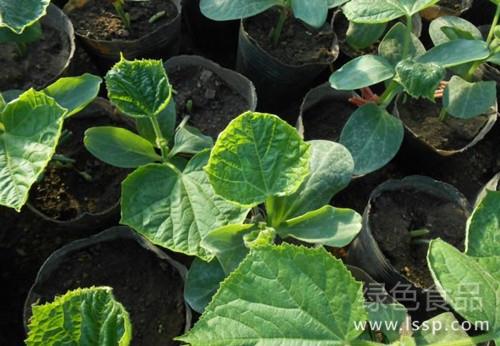Problems needing attention in rational rotation to increase vegetable yield and vegetable rotation
The rotation cultivation of many kinds of vegetables with different properties in the same land according to a certain number of years is beneficial to rational use of soil fertility, reduction of diseases and insect pests, improvement of quality and productivity. In carrying out vegetable rotation, we should pay attention to the following points:

Vegetables
First, different vegetables have different nutrient requirements. Make full use of soil nutrients. Different vegetables absorb different nutrients, such as green vegetables, spinach and other leafy vegetables, need more nitrogen fertilizer; melons, tomatoes, peppers and other fruit vegetables, need more phosphate fertilizer, potatoes, yams and other rhizomes; need more potash fertilizer. Rotation of vegetables that need more nitrogen, more phosphorus and more potassium, or rotation of deep-rooted vegetables and shallow-rooted vegetables, can make full use of nutrients at all levels of the soil. Generally, the foliage vegetables that need more nitrogen had better arrange the eggplant fruits that need more phosphorus. Cucumbers, celery and spinach that absorb fertilizer quickly, and tomatoes, eggplants and chili peppers that respond well to organic fertilizer are best planted in the following year.
Second, different vegetables have different root depth. If deep root vegetables, eggplant fruits, legumes and melons (except cucumbers) are rotated with shallow root leafy vegetables, onions and garlic, fertilizers can be used at all levels in the soil.
Third, different vegetables have different effects on soil fertility. Leguminous vegetables can increase the content of soil organic matter and improve soil fertility, while long-term planting of leafy vegetables that require more nitrogen will lead to the imbalance of nutrient elements in the soil and the decrease of soil fertility, resulting in poor nutrition of some vegetables. Therefore, the growing period of long and short, the need for more and less reasonable combination of planting.
Fourth, different vegetables have different requirements for soil acidity and alkalinity. Potatoes and cabbages will increase soil acidity, while corn and pumpkins will reduce soil acidity, so high yields can be obtained after planting corn and pumpkins and then planting onions that are sensitive to acidity, while planting onions that are sensitive to acidity after planting potatoes and kale will reduce the yield.
Fifth, the occurrence degree of diseases and insect pests is different in different vegetables. Vegetables of the same family have the same diseases and insect pests. The rotation of vegetables in different families can make the pathogen lose its host or change its living environment, so as to reduce or eliminate diseases and insect pests. For example, cucumber Fusarium wilt, aphids, etc., other melons and vegetables will also be infected, if you plant non-cucurbitaceous vegetables, diseases and pests will be reduced or eliminated; for example, after spring onions and garlic are harvested, planting Chinese cabbage can reduce the soft rot of Chinese cabbage; the implementation of grain and vegetable rotation, flood and drought rotation can effectively control soil infectious diseases.
6. The weed inhibition of different vegetables is different. Some vegetables with fast growth or high cultivation density, long growth period and leaves covering more ground, such as melons, cabbages, beans, potatoes, etc., have obvious inhibitory effect on weeds, while vegetables such as carrots, celery and onions with slow seedling and small leaves are easy to breed weeds. The rotation of these vegetables can significantly reduce grass damage.
- Prev

Improper management leads to failure of raising seedlings what to do when cucumber seedlings encounter disaster
Improper management leads to failure of raising seedlings what to do when cucumber seedlings encounter disaster
- Next

Planting skills of Water Ghost Banana
Spring planting skills Spring is the time when the banana wakes up. After a cold winter, the temperature gradually rises. At this time, it is necessary to pour more water to the banana to keep it fully moist. Second, summer planting skills Water Ghost bananas like sufficient light and warm and humid environmental conditions, so it is high temperature and rainy in summer
Related
- Fuxing push coffee new agricultural production and marketing class: lack of small-scale processing plants
- Jujube rice field leisure farm deep ploughing Yilan for five years to create a space for organic food and play
- Nongyu Farm-A trial of organic papaya for brave women with advanced technology
- Four points for attention in the prevention and control of diseases and insect pests of edible fungi
- How to add nutrient solution to Edible Fungi
- Is there any good way to control edible fungus mites?
- Open Inoculation Technology of Edible Fungi
- Is there any clever way to use fertilizer for edible fungus in winter?
- What agents are used to kill the pathogens of edible fungi in the mushroom shed?
- Rapid drying of Edible Fungi

